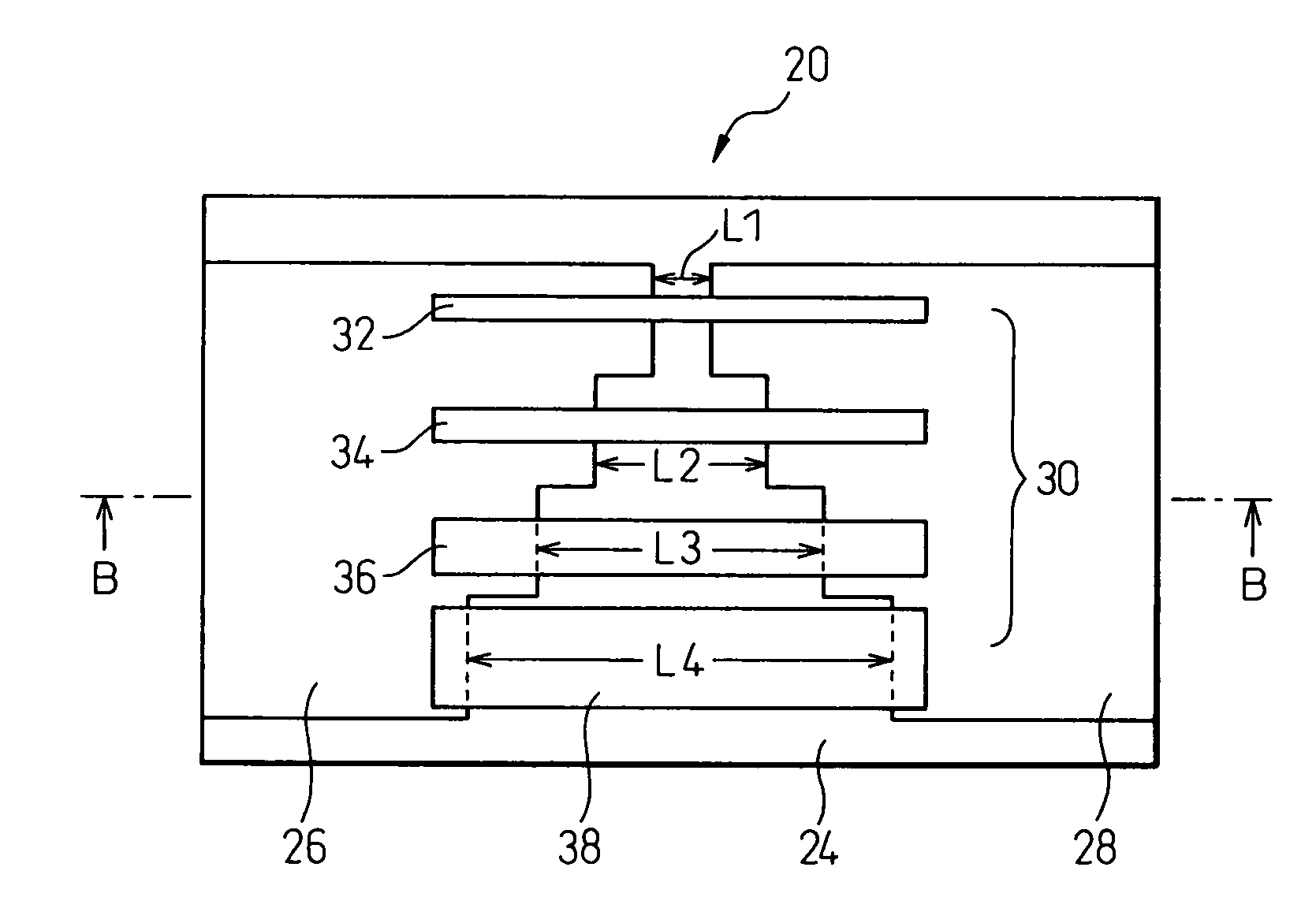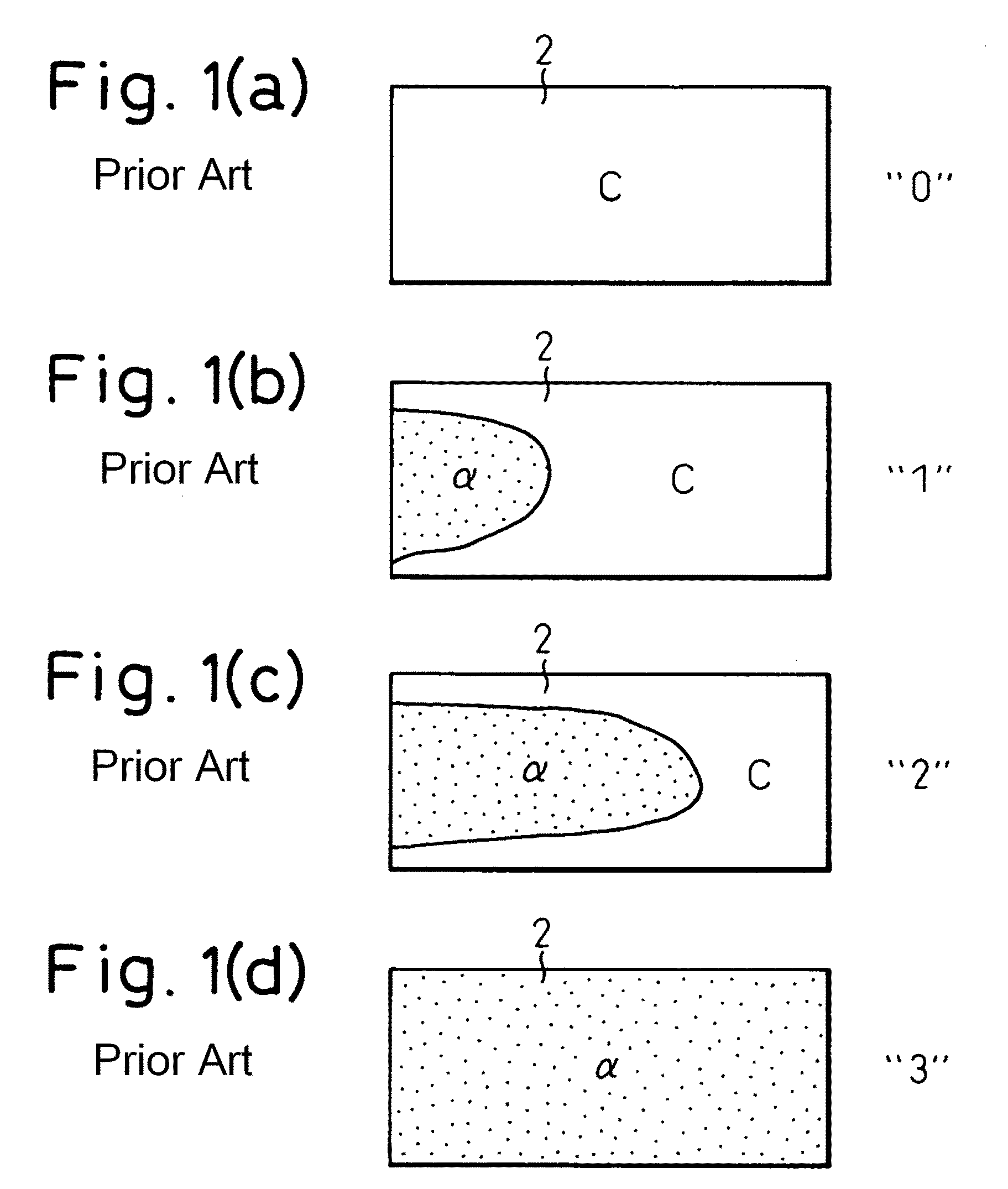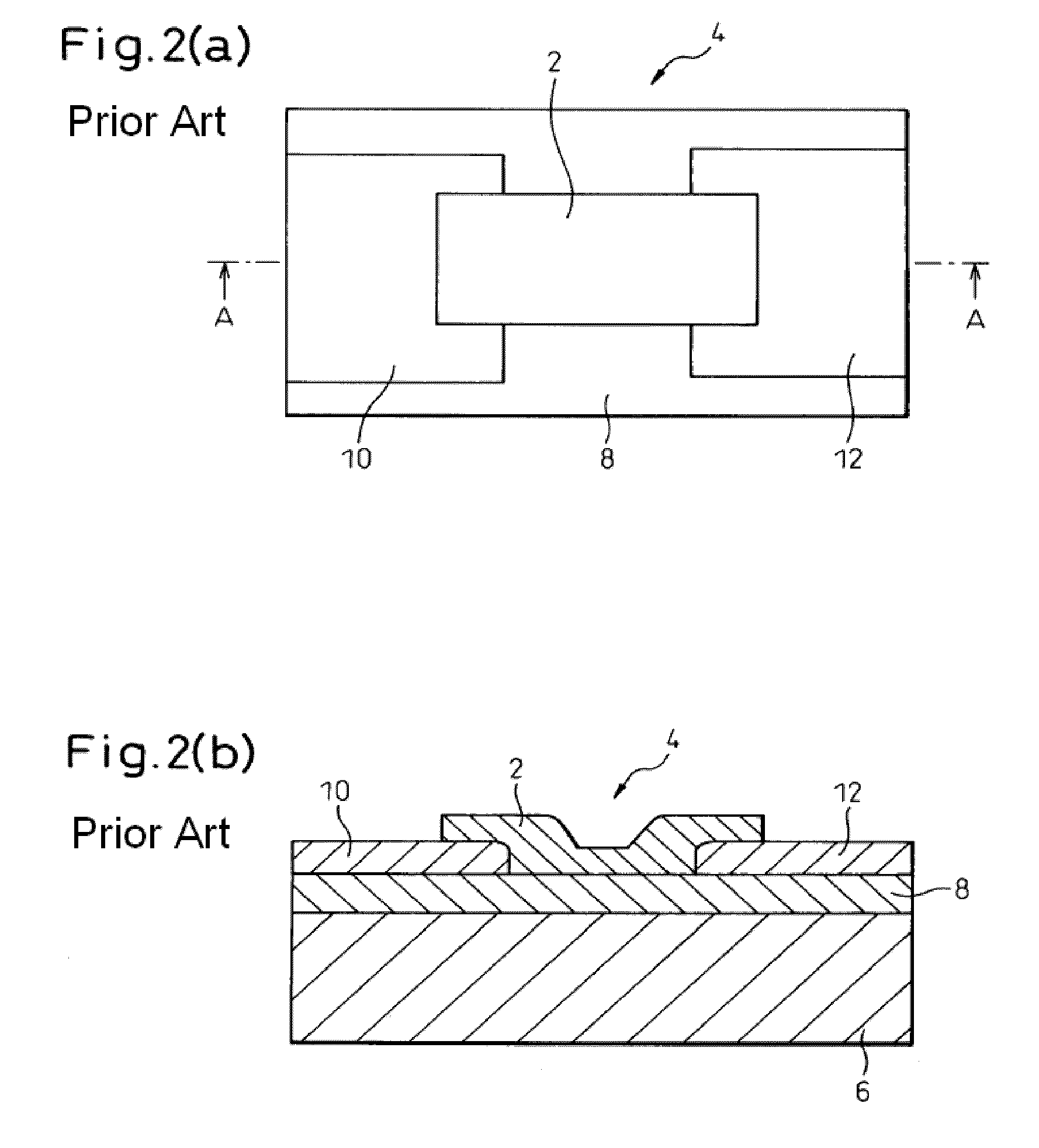Multi-value recording phase-change memory device, multi-value recording phase-change channel transistor, and memory cell array
a memory device and multi-value technology, applied in semiconductor devices, digital storage, instruments, etc., can solve the problems of difficult to achieve multi-value recording, limit the extent to which memory cell density can be increased, etc., to achieve highly reliable multi-value, large margin, and the effect of facilitating the phase-change control of each individual memory layer
- Summary
- Abstract
- Description
- Claims
- Application Information
AI Technical Summary
Benefits of technology
Problems solved by technology
Method used
Image
Examples
embodiment 1
[0047]FIGS. 3(a) and 3(b) are diagrams showing the structure of a phase-change memory device 20 according to a first embodiment of the present invention: Part (a) shows a plan view of the structure and part (b) shows a cross-sectional view taken along line B-B in part (a). As shown, the multi-value recording phase-change memory device 20 according to this embodiment has a structure in which first and second electrode layers 26 and 28 are formed on an insulating film 24 of SiO2 or the like deposited over a semiconductor substrate 22 of Si or the like, and a memory layer 30 of a phase-change material is formed between the electrodes. First and second electrode layers 26 and 28 are current heating electrodes for memory layer 30 and are formed from Al, Au, or like material. The opposing side faces of first and second electrode layers 26 and 28 are each formed in a staircase shape so that the distance L (L1, L2, L3, L4) between the electrodes changes in a step-like manner.
[0048]Memory la...
embodiment 2
[0057]FIG. 4 is a diagram showing the structure of a multi-value recording phase-change memory device 20A according to a second embodiment of the present invention: Part (a) of the figure shows a plan view of the structure and part (b) shows a cross-sectional view taken along line B-B in part (a). In the drawings given hereinafter, the same reference numerals as those in FIG. 3 designate identical or similar component elements to those described with reference to FIG. 3, and therefore, such component elements will not be further described herein.
[0058]Memory layer 30A of this embodiment comprises sub-memory layers 32A, 34A, 34A, and 38A. Each of sub-memory layers 32A, 34A, 34A, and 38A has a two-layer structure consisting of a phase-change material layer (34a) and a resistive layer (34b), as represented, for example, by sub-memory layer 34A in FIG. 4(b). In sub-memory layers 32A to 38A, since the phase-change material layers (indicated by 34a in the case of sub-memory layer 34) are ...
embodiment 3
[0063]FIG. 5 is a diagram showing the structure of a multi-value recording phase-change channel transistor 50 according to a third embodiment of the present invention: Part (a) of the figure shows a plan view of the structure and part (b) shows a cross-sectional view taken along line C-C in part (a). In this transistor 50, memory layer 40 comprises sub-memory layers 42, 44, 46, and 48, which are formed from the same material and in the same shape as sub-memory layers 32A, 34A, 36A, and 38A shown in FIG. 4. However, transistor 50 of the present embodiment differs from the phase-change memory of FIG. 4 in that, in each of sub-memories 42, 44, 46, and 48, a gate electrode 52 is formed on top of the phase-change material layer (for example, 44a) by interposing an insulating layer (for example, 44c) therebetween. In FIG. 5(b), a multilayer structure consisting of resistive layer 44b, phase-change material layer 44a, and insulating layer 44c is shown only for sub-memory layer 44, but it i...
PUM
 Login to View More
Login to View More Abstract
Description
Claims
Application Information
 Login to View More
Login to View More - R&D
- Intellectual Property
- Life Sciences
- Materials
- Tech Scout
- Unparalleled Data Quality
- Higher Quality Content
- 60% Fewer Hallucinations
Browse by: Latest US Patents, China's latest patents, Technical Efficacy Thesaurus, Application Domain, Technology Topic, Popular Technical Reports.
© 2025 PatSnap. All rights reserved.Legal|Privacy policy|Modern Slavery Act Transparency Statement|Sitemap|About US| Contact US: help@patsnap.com



